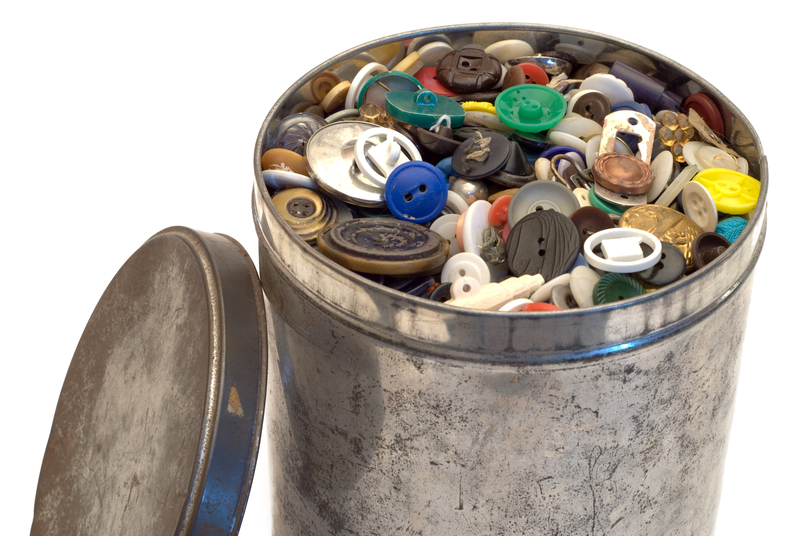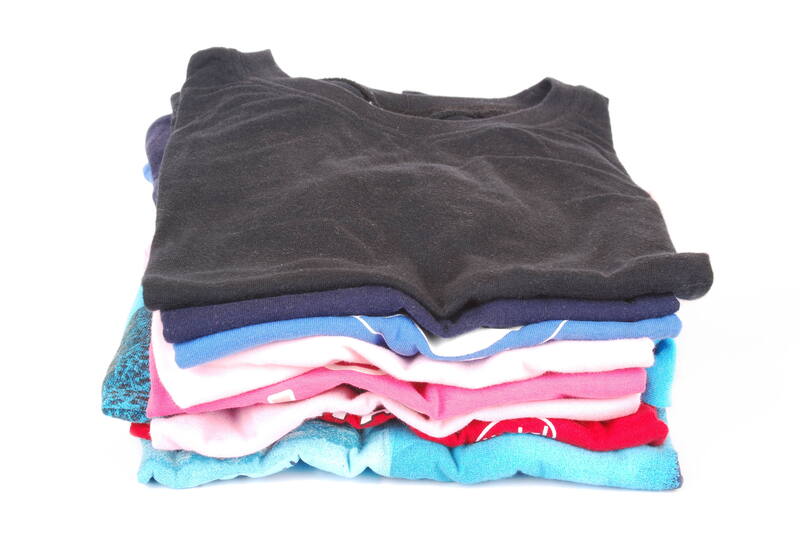Enhance Your Environmental Impact with Home Recycling Tips
Are you looking for actionable ways to make a real difference to the planet right from your own home? Recycling is one of the simplest yet most effective ways to reduce your environmental footprint. In this comprehensive guide, you'll discover practical home recycling tips that can empower you and your family to participate actively in protecting our environment. From improving household waste management to mastering recycling symbols, these strategies are easy to implement--and with lasting positive effects.
Why Is Home Recycling Important for the Environment?
Home recycling minimizes the amount of waste sent to landfills and conserves valuable natural resources. It decreases air and water pollution, conserves energy, and mitigates climate change by reducing greenhouse gas emissions. If everyone adopted effective recycling habits at home, the cumulative impact would be extraordinary.
The Principal Benefits of Recycling at Home
- Reduces landfill waste and saves valuable space.
- Conserves natural resources like minerals, timber, and water.
- Decreases pollution caused by landfills and incinerators.
- Saves energy required for producing new materials.
- Lowers greenhouse gas emissions contributing to global warming.
- Creates green jobs in recycling and manufacturing industries.

Getting Started: Setting Up a Home Recycling System
Before diving into home recycling tips, establish a dedicated recycling system. This foundation makes recycling easier and increases the likelihood of consistent participation from your household.
Steps to Create an Effective Recycling System at Home
- Assess your local recycling guidelines.
Every municipality has unique rules for recycling. Check with your city or town to understand which materials are recyclable and which are not. - Designate recycling bins.
Place clearly marked bins in convenient areas like the kitchen, garage, or near entryways. Label each bin according to the types of materials you recycle (paper, plastics, glass, metals). - Educate every household member.
Ensure everyone in your home knows what can and cannot be recycled, and where to dispose of each item. - Rinse items before recycling.
Quickly clean containers to avoid contamination, odors, and pests. - Monitor and improve
Periodically review your recycling habits and look for ways to improve or expand your efforts.
16 Practical Home Recycling Tips to Boost Your Environmental Impact
1. Master the Recycling Symbols and Codes
Understanding recycling symbols on packaging is essential for proper sorting. Pay attention to numbers in the triangle--their meanings indicate how to recycle that item. For plastics, numbers 1 and 2 (like water bottles and milk jugs) are widely accepted, while numbers 3 to 7 may not be elsewhere.
2. Reduce Packaging Waste
Before recycling, consider buying products with less or eco-friendly packaging. Opt for items that use recycled or easily recyclable materials and bulk purchases to reduce single-use waste.
3. Compost Organic Waste
Food scraps and yard waste make up a significant portion of household garbage. Composting these organics at home turns waste into nutrient-rich soil, slashing landfill contributions and greenhouse gas emissions.
4. Recycle Electronics Responsibly
Electronic waste (e-waste) contains hazardous materials. Find certified e-waste recycling events or drop-off centers for items like batteries, old phones, computers, and appliances. Never place electronics in your curbside recycling bin.
5. Upcycle Whenever Possible
An innovative aspect of home recycling is upcycling. Rather than discarding items, get creative--turn glass jars into containers, old t-shirts into cleaning rags, and used furniture into new projects. Upcycling extends product life and reduces waste.
6. Rethink Single-Use Plastics
Cut down on plastic bags, utensils, and straws by switching to reusable alternatives. Carry a reusable water bottle, canvas grocery bags, and glass food containers.
7. Flatten and Break Down Boxes
Save space in your recycling bin and make pickups more efficient by flattening cardboard boxes and cartons. Remove packing tape and labels as directed by your local recycling guidelines.
8. Avoid Wishcycling
Wishcycling means tossing non-recyclables into the bin in the hope they'll get recycled. Contamination from these items can ruin otherwise good recyclables. Only place accepted materials in your recycling bins.
9. Sharpen Your Paper Recycling
Most kinds of paper--like newspapers, magazines, and office paper--can go into recycling. But avoid recycling wet, greasy, or food-soiled paper as it can lower the quality of recycled material.
10. Participate in Local Recycling Initiatives
Join community recycling programs or support local drives for materials such as electronics, old clothing, or hazardous waste. Being proactive increases awareness and expands the impact beyond your home.
11. Reuse Before Recycling
Give new life to jars, plastic containers, and cardboard boxes as storage or craft materials before tossing them into the recycling bin.
12. Donate Unwanted Items
Consider giving gently used clothing, toys, furniture, and appliances to charities or thrift stores instead of discarding them. This extends an item's useful life and benefits your community.
13. Buy Recycled Products
Support the recycling industry and close the loop by choosing products made from post-consumer recycled content, such as recycled paper, plastics, and glass items.
14. Be Mindful of Hazardous Waste
Items like paint, motor oil, pesticides, and certain cleaning agents require special disposal. Never place these in regular recycling. Find designated disposal facilities in your community.
15. Encourage Your Kids and Family
Make recycling a habit for everyone. Get children involved with fun activities like sorting recyclables, DIY upcycling projects, and educational games.
16. Conduct a Waste Audit
Track your household's waste for a week. Identify what you throw away most and target those areas for recycling or reduction.
Common Home Recycling Mistakes and How to Avoid Them
- Leaving food residue on recyclables. Always rinse containers before recycling.
- Bagging recyclables in plastic bags. Most facilities can't process bagged materials; place items loose in bins.
- Combining non-recyclable and recyclable materials. Separate as required and check local guidelines.
- Including plastic bags or films. Recycle these at collection points in supermarkets, not in curbside bins.
- Missing out on specialty recycling programs. Don't forget to recycle batteries, light bulbs, and electronics properly.
Recycling Different Materials at Home: A Closer Look
Paper and Cardboard
- Remove staples, tape, and plastic liners where possible.
- Flatten boxes completely.
- Keep paper dry to maintain recyclability.
Plastics
- Check the number in the recycling triangle.
- Rinse bottles and containers thoroughly.
- Remove caps unless instructed otherwise by your municipality.
Glass
- Rinse all containers to remove food or drink residue.
- Do not recycle broken glass through curbside programs.
- Remove metal lids and recycle separately if applicable.
Metals
- Rinse cans and foil trays.
- Crush if possible to save space.
- Do not recycle items like aerosol cans unless permitted by your recycling program.
Beyond Recycling: Sustainable Living Starts at Home
While home recycling is vital for the environment, the goal is to reduce, reuse, and recycle in all aspects of life. Consider these additional sustainability steps to amplify your positive environmental impact:
- Make mindful purchasing decisions. Choose products with sustainability certifications and minimal packaging.
- Reduce water and energy consumption at home.
- Avoid disposable items whenever possible.
- Invest in durable, high-quality goods for longer lifespans.

Frequently Asked Questions about Home Recycling
What Items Can I Recycle at Home?
Generally, you can recycle paper, cardboard, select plastics, metal cans, and glass containers. Check with your local waste management provider for specific guidelines.
Is It OK to Recycle Bottles With Lids On?
It depends on your municipality. Some require you to remove lids, while others ask you to leave them on. Explore your local recycling rules for accurate guidance.
How Can Families Reduce Recycling Contamination?
Assign roles for sorting, label bins clearly, and ensure containers are clean before recycling. Hold regular family check-ins to improve habits.
Can I Recycle Pizza Boxes?
Pizza boxes with grease or food stains cannot be recycled; only clean, grease-free portions should be placed in recycling bins.
Conclusion: Amplify Your Environmental Impact Through Home Recycling
Making a commitment to environmentally friendly recycling at home not only benefits the planet but also sets an example for others. By following the above home recycling tips, you can play a crucial role in protecting the Earth for future generations. Remember: every can, bottle, and scrap matters--so start today and inspire your household to champion a cleaner, greener world!
Ready to enhance your environmental impact? Get started with these home recycling tips, share them with your community, and be proud of the positive change you're making!
- Set up your recycling bins today.
- Educate your family and friends.
- Be proactive and stay updated on recycling best practices.
Together, we can turn small steps into a transformative environmental legacy!



